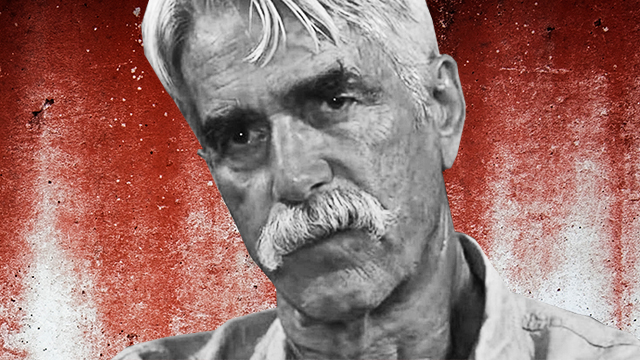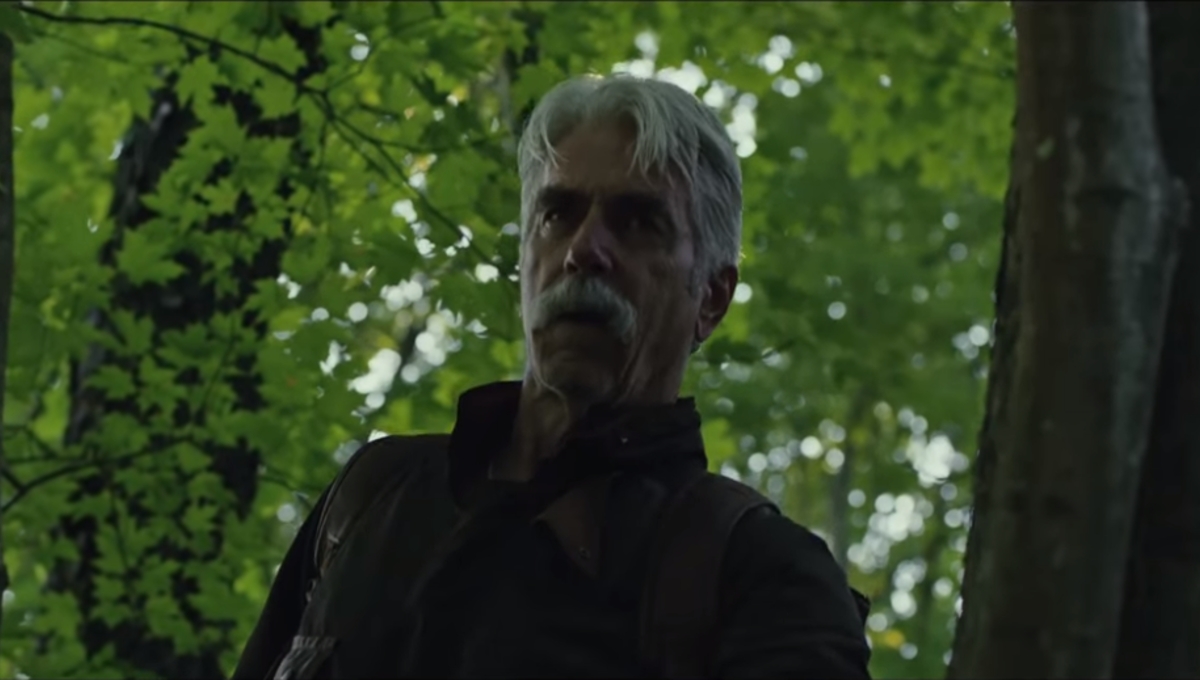
Does truth in advertising matter when you wind up with something better than you’d anticipated? That’s the question I’m seeking an answer to after watching The Man Who Killed Hitler And Then The Bigfoot, a debut feature from writer-director Robert D. Krzykowski that aims to make up for its lack of cohesion with a sentient caricature of a Sam Elliott performance that manages to pull at the heartstrings.
In the film, Elliott plays Calvin Barr, a seemingly hapless former war hero in what seems to be the late 1970s or early 1980s. Barr is spending his last years in self-imposed semi-seclusion with his dog, his mustache, and his pill planner. And he’s not particularly happy with the third part. There’s also the occasional visit to the local bar and to his barber, who is also his peaceably estranged younger brother (portrayed by longtime comic Larry Miller, who plays it affable but doesn’t crowd Calvin). True to the idea of what we all think Sam Elliott is like, he doesn’t say an awful lot in these interactions.
While The Man Who Killed Hitler And Then The Bigfoot does technically live up to its title, it’s just not as much fun or campy as the label might suggest. It’s also not quite a part of the “hell yeah, violence!” elder actioner genre made popular by the Liam Neeson/Clint Eastwood oeuvre. But that doesn’t mean it’s bad. The film feels more like a drama about loss, regret, and an emotionally stunted post World War II American male with shards of campiness and badassery sprinkled into the mix. There’s a tussle with a guy in a Bigfoot costume that bears a resemblance to a rabid Chaka from Land Of The Lost, for instance.
Calvin’s haunted demeanor isn’t tidily explained with a few stray bits of dialogue by side characters. (“Oh, that’s Calvin, he’s sad because war.”) Character development isn’t left to the audience’s imagination. Instead, Krzykowski commits a large chunk of the film’s real estate to a series of flashbacks that, among other things, introduce us to a younger version of Calvin before, during, and after the war (played by Aidan Turner from The Hobbit trilogy and the UK version of Being Human). We also meet Maxine (played by Caitlin FitzGerald from Succession and Masters Of Sex), the object of his affection. The courtship between these two is played slow and gentle. (He’s an anxious soon-to-be soldier and she’s a good-hearted teacher.) We’re given just enough to better understand how much she means to “present day” Calvin.

Flashbacks to Calvin’s time in the war and around the mission to kill Hitler are also very effective in underwriting Elliott’s version of the character. But it’s his reaction to hero worship that more thoroughly spells out how much Calvin was impacted by his actions during the war, something he’s determined to downplay. That’s also a moment that allows Kryzkowski to shine due to the nuanced way he handles the subject and how it connects to events happening in the here and now. It’s ironic that this all almost directly precedes the moment where The Man Who Killed Hitler And Also The Bigfoot takes a weird turn toward fulfilling the second part of its title: the killing of Bigfoot.
In that third act, Krzykowski becomes un-caged, visually, trading tense closeups and the relative tranquility of Calvin’s easy-going suburban life for cheesy quick shots of him confidently picking out weaponry as he morphs into Rambo before stalking the Canadian wilderness for his prey. There are also hero shots of a field aflame and a confrontation with the Bigfoot on a mountain top over-looking an amber sunset that is meant to feel familiar.
I have no real beef with the fact that Calvin enters into an Annihilation-like scenario with quickly fading hesitancy or that it’s visually and narratively detached from a lot of what is shown leading up to it. “Weird” is just another word for interesting and there are plenty of breadcrumbs that can explain away the shift in his thinking and in the feel of the film. You just have to assume that the lesson of the title permeates and that things aren’t necessarily as they seem.
Or maybe I’m overthinking it and the film just leans into absurdity for no reason or because of Kryzkowski’s inexperience. That’s sort of the beauty of something that is open to interpretation. And even if this all sounds too far astray from the punch-em-up lark that you thought it was, maybe go in anyway because, at the very least, you’re walking away with an exemplary Sam Elliott performance.
‘The Man Who Killed Hitler And Then The Bigfoot’ is available to rent via Amazon and is screening in select theaters.






